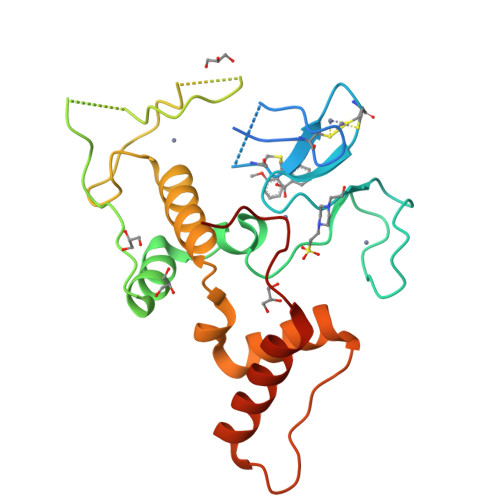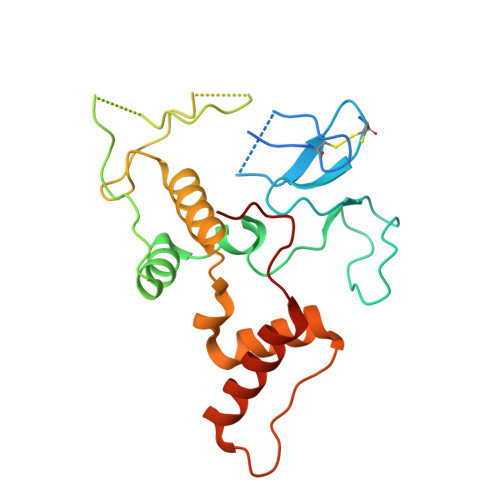Molecular bases for HOIPINs-mediated inhibition of LUBAC and innate immune responses.
Oikawa, D., Sato, Y., Ohtake, F., Komakura, K., Hanada, K., Sugawara, K., Terawaki, S., Mizukami, Y., Phuong, H.T., Iio, K., Obika, S., Fukushi, M., Irie, T., Tsuruta, D., Sakamoto, S., Tanaka, K., Saeki, Y., Fukai, S., Tokunaga, F.(2020) Commun Biol 3: 163-163
- PubMed: 32246052
- DOI: https://doi.org/10.1038/s42003-020-0882-8
- Primary Citation of Related Structures:
6KC5, 6KC6 - PubMed Abstract:
The NF-κB and interferon antiviral signaling pathways play pivotal roles in inflammatory and innate immune responses. The LUBAC ubiquitin ligase complex, composed of the HOIP, HOIL-1L, and SHARPIN subunits, activates the canonical NF-κB pathway through Met1-linked linear ubiquitination. We identified small-molecule chemical inhibitors of LUBAC, HOIPIN-1 and HOIPIN-8. Here we show that HOIPINs down-regulate not only the proinflammatory cytokine-induced canonical NF-κB pathway, but also various pathogen-associated molecular pattern-induced antiviral pathways. Structural analyses indicated that HOIPINs inhibit the RING-HECT-hybrid reaction in HOIP by modifying the active Cys885, and residues in the C-terminal LDD domain, such as Arg935 and Asp936, facilitate the binding of HOIPINs to LUBAC. HOIPINs effectively induce cell death in activated B cell-like diffuse large B cell lymphoma cells, and alleviate imiquimod-induced psoriasis in model mice. These results reveal the molecular and cellular bases of LUBAC inhibition by HOIPINs, and demonstrate their potential therapeutic uses.
Organizational Affiliation:
Department of Pathobiochemistry, Graduate School of Medicine, Osaka City University, Osaka, Japan.




















